Sex education has long been a critical component of human development, but for LGBTQ+ individuals, i…
Embarking on a sexual journey can feel like a complex experience filled with questions, uncertaintie…
Sexuality is an integral part of human life that encompasses a wide range of behaviors, expressions,…
The human reproductive system is a marvel of biological engineering, intricately designed to perpetu…
In an age characterized by rapid technological advancement and information overload, adolescents are increasingly exposed to diverse messages about sexuality. The ubiquity of the internet and social media platforms has made it easier for young people to access information, but not all of it is reliable or appropriate. According to the Pew Research Center, 95% of teens have access to a smartphone, and 45% report being online almost constantly1. This constant connectivity underscores the need for structured, accurate, and comprehensive sex education that can guide youth through the myriad of information they encounter daily.
Comprehensive sex education is not merely about teaching the mechanics of sex. It encompasses a holistic approach that includes information on human development, relationships, personal skills, sexual behavior, sexual health, and society and culture. By providing young people with factual information and practical skills, comprehensive sex education empowers them to make informed decisions, engage in healthy relationships, and understand the consequences of their actions.
The State of Adolescent Sexual Health

Adolescence is a critical period for sexual development and exploration. However, without proper guidance, young people may engage in risky behaviors that have long-term implications for their health and well-being.
Unintended Pregnancies: Despite advances in contraceptive technology and education, unintended teenage pregnancies remain a significant concern. The World Health Organization (WHO) reports that approximately 21 million girls aged 15–19 years in developing regions become pregnant each year, and about 12 million of them give birth2. These pregnancies often result from a lack of access to contraception and insufficient knowledge about reproductive health.
In developed countries, similar challenges persist. In the United States, although the teen birth rate has declined significantly over the past two decades, it remains higher than in many other industrialized nations. In 2019, the U.S. teen birth rate was 16.7 births per 1,000 females aged 15–193. Teenage mothers are more likely to drop out of school, face unemployment, and live in poverty, perpetuating a cycle of disadvantage.
Sexually Transmitted Infections (STIs): STIs are another critical issue affecting adolescents. The Centers for Disease Control and Prevention (CDC) estimates that young people aged 15–24 acquire half of all new STIs in the United States, despite representing just 25% of the sexually experienced population4. Common STIs among adolescents include chlamydia, gonorrhea, and human papillomavirus (HPV). These infections can lead to serious health problems, including infertility and increased risk of cervical cancer.
HIV/AIDS: Globally, adolescents and young adults remain at high risk for HIV infection. In 2020, approximately 1.7 million adolescents (aged 10–19) were living with HIV worldwide5. Many new infections occur due to inadequate sex education, stigma surrounding HIV testing, and limited access to prevention services.
Mental Health Implications: Sexual health is closely linked to mental health. Adolescents grappling with issues related to their sexual identity, orientation, or experiences may face anxiety, depression, or other mental health challenges. A study published in the Journal of Adolescent Health found that comprehensive sex education that includes discussions about sexual orientation and gender identity can significantly reduce homophobic bullying and improve mental health outcomes for LGBTQ+ youth6.
Benefits of Comprehensive Sex Education
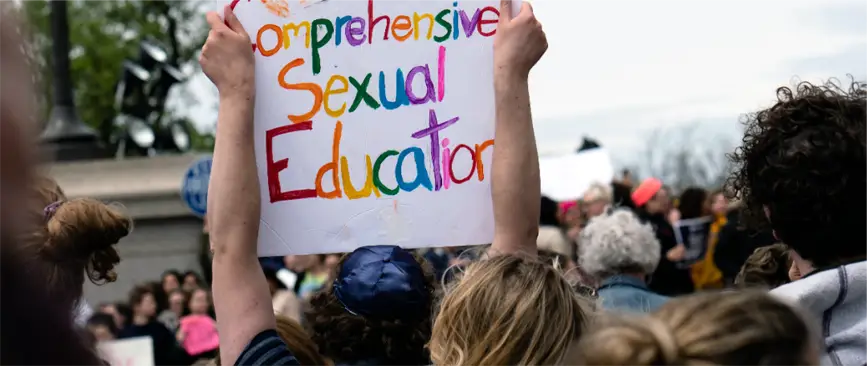
Comprehensive sex education offers numerous benefits that extend beyond the prevention of unintended pregnancies and STIs. It plays a pivotal role in shaping healthy attitudes, behaviors, and relationships.
Informed Decision-Making: By providing accurate information about sexual and reproductive health, comprehensive sex education empowers young people to make informed choices. This includes understanding the importance of consent, recognizing healthy versus unhealthy relationships, and knowing how to protect themselves and their partners from STIs and unintended pregnancies.
Delay in Sexual Initiation: Contrary to the belief that sex education encourages early sexual activity, research indicates that comprehensive programs can delay the onset of sexual activity. A study in the Journal of Youth and Adolescence found that students who received comprehensive sex education were less likely to initiate sex at an early age compared to those who received abstinence-only education7.
Reduction in Risky Behaviors: Comprehensive programs teach adolescents about the risks associated with sexual activity and how to mitigate them. This includes instruction on proper condom use, the importance of regular STI testing, and the use of effective contraceptive methods. As a result, students are more likely to engage in safer sexual practices.
Promotion of Gender Equality: Comprehensive sex education addresses topics related to gender roles, stereotypes, and power dynamics in relationships. This can contribute to reducing gender-based violence and promoting equality by challenging harmful norms and encouraging respectful interactions.
Support for LGBTQ+ Youth: Inclusive sex education that covers sexual orientation and gender identity helps create a supportive environment for LGBTQ+ students. This inclusivity can reduce feelings of isolation, decrease instances of bullying, and improve overall school climate.
Challenges in Implementing Comprehensive Sex Education

Despite its benefits, implementing comprehensive sex education faces several obstacles that vary by region, culture, and political climate.
Cultural and Religious Opposition: In many communities, discussions about sexuality are taboo, and there may be strong cultural or religious objections to comprehensive sex education. Some parents and community leaders fear that such education will encourage sexual activity among youth. Overcoming these objections requires sensitive engagement and education about the proven benefits of comprehensive programs.
Policy and Legislative Barriers: Government policies can either facilitate or hinder the implementation of comprehensive sex education. In some countries or states, there are mandates that require abstinence-only education, or there may be restrictions on discussing certain topics like contraception or sexual orientation. Advocacy and policy reform are necessary to create an enabling environment for comprehensive education.
Lack of Resources and Training: Effective sex education requires well-trained educators who are comfortable discussing sensitive topics. However, many schools lack the resources to provide adequate training. Additionally, educational materials may be outdated or insufficient. Investment in teacher training and curriculum development is crucial.
Misinformation and Stigma: Myths and misconceptions about sex and sexuality persist, often fueled by misinformation online. Adolescents may receive conflicting messages from peers, media, and even adults. Addressing stigma and correcting misinformation is an ongoing challenge that comprehensive programs must tackle head-on.
Strategies for Effective Comprehensive Sex Education
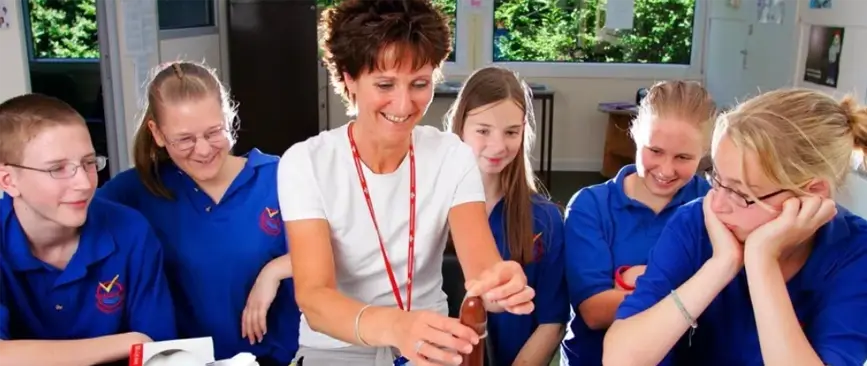
To maximize the impact of comprehensive sex education, programs should be carefully designed and implemented with attention to local contexts and needs.
Evidence-Based Curriculum: Programs should be grounded in scientific research and best practices. This involves staying updated with the latest findings in sexual health education and incorporating methods that have been proven effective.
Cultural Sensitivity and Inclusivity: Materials and teaching methods should be culturally appropriate and inclusive of all students, regardless of gender, sexual orientation, ethnicity, or religious background. This fosters a respectful and supportive learning environment.
Engagement of Stakeholders: Involving parents, community leaders, and students in the development and implementation of programs can enhance acceptance and effectiveness. Open communication can help address concerns and build trust.
Interactive and Skills-Based Learning: Moving beyond lecture-style teaching, programs should engage students in interactive activities that build practical skills. Role-playing, group discussions, and problem-solving exercises can enhance understanding and retention.
Continuous Evaluation and Improvement: Regular assessment of program outcomes is essential. This includes collecting feedback from students and educators, monitoring changes in knowledge and behaviors, and adjusting the curriculum as needed.
Case Studies: Successes and Lessons Learned
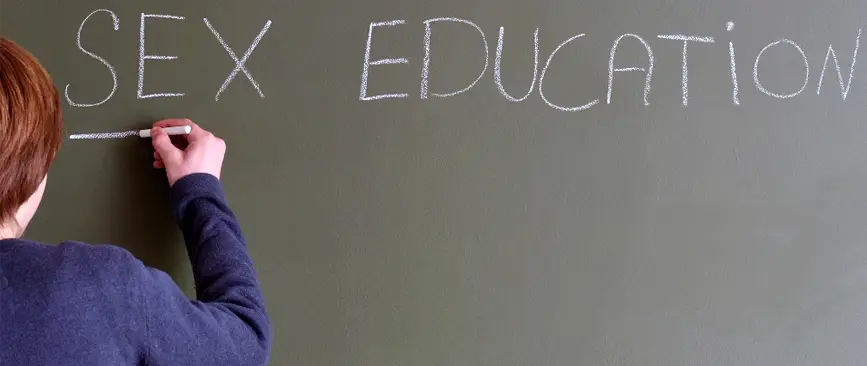
Examining real-world examples provides valuable insights into the effectiveness of comprehensive sex education.
The Netherlands: The Dutch approach to sex education is often cited as a model of success. Starting as early as age four, Dutch children receive age-appropriate information about love, relationships, and sexuality. This open and progressive approach has contributed to the Netherlands having one of the lowest teenage pregnancy rates in the world, at approximately 4.5 births per 1,000 women aged 15–198. Dutch adolescents report feeling well-informed and comfortable discussing sexual health issues.
Sweden: Sweden’s comprehensive sex education program, mandatory since 1955, includes topics such as sexual orientation, consent, and contraception. The country has seen low rates of teenage pregnancies and STIs. A study published in Sex Education journal highlighted that Swedish students possess high levels of knowledge about sexual health and exhibit responsible behaviors9.
Uganda: Uganda’s experience with the “ABC” (Abstinence, Be faithful, use Condoms) campaign in the early 2000s provides a cautionary tale. Initially successful in reducing HIV rates, the program shifted towards an abstinence-only approach due to external funding influences. This led to decreased condom use and a resurgence of HIV infections10. The lesson underscores the importance of maintaining a balanced, comprehensive approach.
The Role of Technology and Media

Incorporating technology into sex education can enhance accessibility and engagement.
Online Platforms and Apps: Digital tools like mobile applications and websites offer interactive and personalized learning experiences. For example, the “Sexuality Education Resource Centre” provides online modules that adolescents can access privately11.
Social Media Campaigns: Utilizing platforms like Instagram, TikTok, and YouTube can help disseminate accurate information to a broader audience. Influencers and educators can create content that resonates with young people.
Telehealth Services: Virtual consultations with healthcare providers can offer confidential advice and services, particularly important for adolescents who may face barriers in accessing in-person care.
Addressing Specific Needs: LGBTQ+ Inclusivity
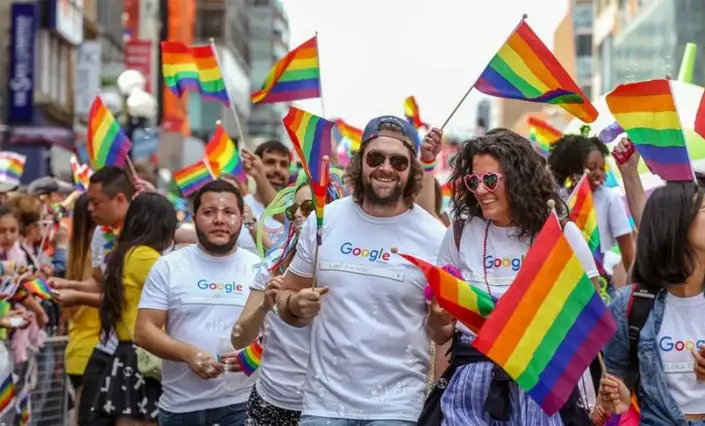
Inclusive sex education is vital for the well-being of LGBTQ+ youth.
Reducing Discrimination and Bullying: Inclusive curricula can reduce homophobic and transphobic attitudes among students. The Gay, Lesbian & Straight Education Network (GLSEN) found that schools with LGBTQ+ inclusive policies have lower rates of bullying and harassment12.
Mental Health Support: LGBTQ+ adolescents are at higher risk for mental health issues due to stigma and discrimination. Comprehensive sex education that affirms diverse identities can improve self-esteem and reduce depression and anxiety.
Health Risks: LGBTQ+ youth may face unique health risks. For example, young men who have sex with men are at increased risk for HIV. Tailored education can address these specific concerns and promote safe practices.
Policy Recommendations

To advance comprehensive sex education, concerted efforts at policy and community levels are necessary.
National Standards and Guidelines: Governments should establish clear standards for comprehensive sex education that are mandatory for all schools. These should be based on scientific evidence and human rights principles.
Funding and Resources: Allocating sufficient funds for program development, educator training, and materials is essential. Investing in sex education yields long-term benefits in public health and social outcomes.
Partnerships and Collaboration: Collaborating with non-governmental organizations, healthcare providers, and international agencies can enhance program quality and reach.
Legal Protections: Enacting laws that protect the rights of adolescents to receive accurate sexual health information and services is crucial. This includes safeguarding against discrimination based on gender, sexual orientation, or marital status.
Global Initiatives and Commitments
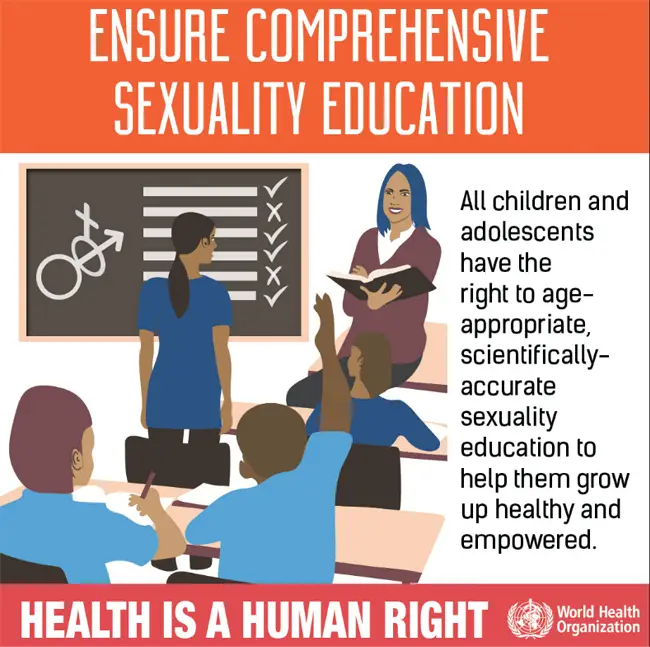
International organizations have recognized the importance of comprehensive sex education.
United Nations Sustainable Development Goals (SDGs): SDG 3 aims to ensure healthy lives and promote well-being for all ages, including targets related to sexual and reproductive health13. SDG 5 focuses on achieving gender equality and empowering all women and girls.
UNESCO’s Commitment: UNESCO’s International Technical Guidance on Sexuality Education provides a framework for developing effective programs. It emphasizes the need for education that is age-appropriate, culturally relevant, and scientifically accurate14.
WHO’s Role: The World Health Organization advocates for comprehensive sexuality education as part of its efforts to promote sexual and reproductive health rights globally. WHO provides resources and technical support to member states15.
Comprehensive sex education is a fundamental component of adolescent development and public health. By providing young people with the knowledge and skills they need to navigate relationships and sexual health, we empower them to make decisions that positively impact their lives and communities. Overcoming the challenges to implementing comprehensive programs requires collective action from educators, policymakers, parents, and young people themselves.
Investing in comprehensive sex education is an investment in the future—a future where adolescents can grow into healthy, informed, and responsible adults. The evidence is clear: when we equip youth with accurate information and support, we lay the groundwork for a healthier, more equitable society.
References:
- Pew Research Center. (2018). Teens, Social Media & Technology 2018. Retrieved from Pew Research Center website
- World Health Organization. (2020). Adolescent pregnancy. Retrieved from WHO website
- Martin, J. A., et al. (2021). Births: Final Data for 2019. National Vital Statistics Reports, 70(2). Retrieved from CDC website
- Centers for Disease Control and Prevention. (2021). Sexually Transmitted Disease Surveillance 2019. Retrieved from CDC website
- UNAIDS. (2021). Global HIV & AIDS statistics — Fact sheet. Retrieved from UNAIDS website
- Proulx, C. N., Coulter, R. W. S., Egan, J. E., Matthews, D. D., & Mair, C. (2019). Associations of Lesbian, Gay, Bisexual, Transgender, and Questioning–Inclusive Sex Education With Mental Health Outcomes and School-Based Victimization in U.S. High School Students. Journal of Adolescent Health, 64(5), 608–614.
- Stanger-Hall, K. F., & Hall, D. W. (2011). Abstinence-Only Education and Teen Pregnancy Rates: Why We Need Comprehensive Sex Education in the U.S. PLoS ONE, 6(10), e24658.
- United Nations Economic Commission for Europe. (2020). Statistical Database. Retrieved from UNECE website
- Lazarus, J. V., et al. (2010). Systematic review of interventions to prevent the spread of sexually transmitted infections, including HIV, among young people in Europe. Croatian Medical Journal, 51(1), 74–84.
- Cohen, S., & Tate, T. (2005). The Less They Know, the Better: Abstinence-Only HIV/AIDS Programs in Uganda. Human Rights Watch. Retrieved from HRW website
- Sexuality Education Resource Centre. (2021). Online Learning Modules. Retrieved from SERC website
- Kosciw, J. G., et al. (2020). The 2019 National School Climate Survey. GLSEN. Retrieved from GLSEN website
- United Nations. (2015). Sustainable Development Goals. Retrieved from UN website
- UNESCO. (2018). International technical guidance on sexuality education: An evidence-informed approach. Retrieved from UNESCO website
- World Health Organization. (2018). WHO recommendations on adolescent sexual and reproductive health and rights. Retrieved from WHO website

Gerald Werner
Sex Education Editor
An experienced editor with a background in journalism and a master’s degree in education, they lead the Sex Education section at EroticThreads. With over 15 years of experience in writing and editorial management, they have contributed to expanding the platform’s reach and impact by creating evidence-based, inclusive, and engaging content on sexual wellness, relationships, and personal empowerment. Their work has been featured in several international forums and publications advocating for modernized sexual education. Outside of their professional role, they enjoy exploring the outdoors, experimenting with vegan cuisine, and curating a personal library of rare and first-edition books.
